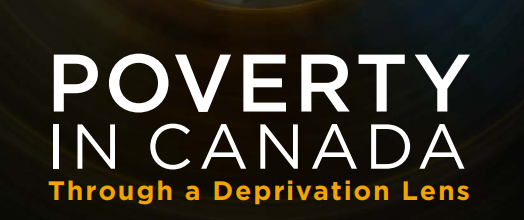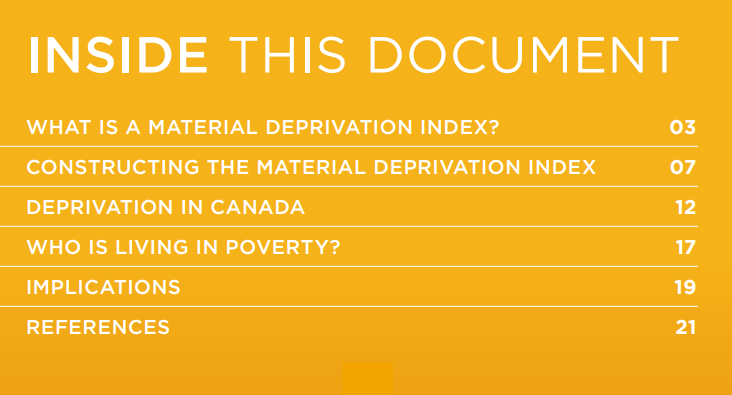[Resource] Poverty in Canada Through a Deprivation Lense

WHAT IS A MATERIAL DEPRIVATION INDEX?
In Canada, we commonly measure the extent of poverty by determining an income level, called a poverty line, for households of different compositions and in a variety of locations. Households whose income is below the poverty line are classified as being poor, while those above the poverty line are classified as not being poor. (Here we are using the term “household” to refer to a single person or a group of people who live together and share economic resources.) The official poverty line in Canada is based on the Market Basket Measure (MBM). The MBM is calculated by adding up the cost of a “basket” of goods and services that represent a modest, basic standard of living for a household of two adults and two children in various locations across Canada. A poverty line is then estimated for households of different sizes by using an equivalence scale to establish how much income is required, in theory, to enable smaller or larger households to purchase an equivalent basket for their household. According to the MBM, the prevalence of poverty in Canada was 10.3 per cent in 2019, 6.4 per cent in 2020 – largely because of the extraordinary support measures taken during the height of the COVID-19 pandemic – and 7.4 per cent in 2021, the most recent year for which final data are available. As of the time of writing this report, the official poverty rate for 2022 is predicted to jump to 9.8 per cent (Heisz & Gustajtis, 2023).

-
By
Food Banks Canada
-
Published
Nov 14, 2024
-
Subject Area
- Food Security & Nutritional Supports
- Age-friendly Communities
-
Audience
- Academics
- Funders
- Government (Politicians, Policy Makers) and Health Authorities
- Service Providers (Non-profits, Community Organizations, Local government)
- Caregivers, Seniors & Volunteers
- Government
- Health Authorities
-
Category
- Advocacy
- Evidence-based & emerging practices
- Research & Reports
- Research & Evidence
